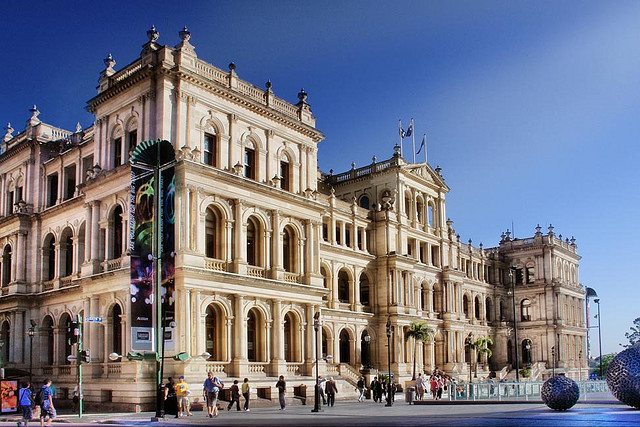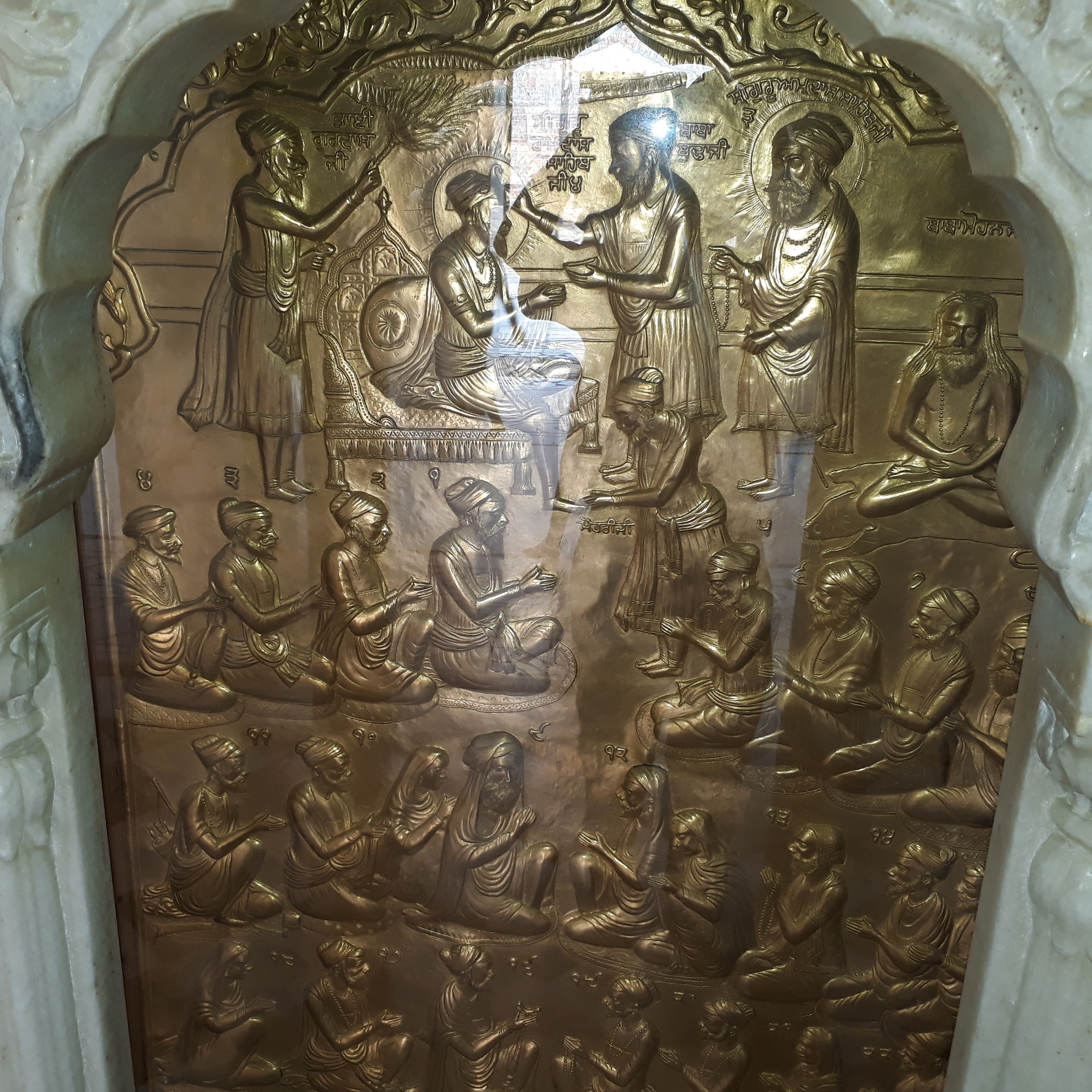|
Golak (Sikhism)
A Golak (meaning "till", "receptacle", or "cash-box") is a donation-box installed at Sikh temples for the purposes of keeping gifts, offerings, and financial contributions. The golak is usually kept at the front of the ''sanctum sanctorum'' in the Darbar Sahib Hall as a receptacle for visitors to put money inside. Whatever is inputted into the golak should be used for charitable means and offerings are made in the name of the guru. They are found in gurdwaras and historically, dharamsāls. The donations from the golak fund ''langar'', schools, and hospitals. Etymology The word Punjabi word golak is related from the Sanskrit word ''golak'' and Persian ''gholak''. Purpose Sikhism stresses upon '' dān'' (charity). Sikhs are religiously mandated to part with a tenth of their income for donations, known as ''dasvandh''. The '' rehitnamas'' mandate Sikh households to maintain their own personal golak to collect their tithe together. The dasvandhs collected and routine offerings co ... [...More Info...] [...Related Items...] OR: [Wikipedia] [Google] [Baidu] |
Masand
A masand was a representative, religious preacher, and tithe collector in Sikhism. They were an officially appointed missionary minister representing the Sikh Guru, who baptized conversions to Sikhism, and collected '' dasvandh'' (tithe) as an offering to the Sikh community and religious establishment. A masand forwarded the collected amount to the Sikh guru. The masand has been described as being territorial deputies or vicars.Kothari, Rita & Thadhani, Jasbirkaur. (2016). ''Sindhi Sikhs in India: The Missing People''. South Asia: Journal of South Asian Studies. 39. 1-18. 10.1080/00856401.2016.1233716. https://www.researchgate.net/publication/309276179_Sindhi_Sikhs_in_India_The_Missing_People The appointing of a masand conferred a distinct and unique Sikh status upon specific areas, occasions, and rituals. Etymology The word masand (Punjabi: ਮਸੰਦ) is an adaptation of the Persian term 'masnad' (Punjabi: ਮਸਨਦ), which refers to 'a seat' that is at a lower level th ... [...More Info...] [...Related Items...] OR: [Wikipedia] [Google] [Baidu] |
SikhNet
SikhNet is a Sikh-centric website operated by the 3HO organization. SikhNet is a tax exempt 501(c)3 not-for-profit corporation in the U.S.A. It caters to what it has termed as the "cyber ''sangat''" ("cyber congregation"). History Bulletin board system The origins of SikhNet can be traced back to a bulletin board system (BBS) created by Guruka Singh, launched in 1983. Harbhajan Kaur and Mahan Singh in Millis, Massachusetts were the coordinators of the early SikhNet BBS. The server operated through GEnie with a 300 baud connection. In February 1986, the SikhNet BBS server was upgraded and went online with a 10 Mhz IBM XT clone computer with a 1200 baud (later 9600 baud) modem. The SikhNet BBS was an early version of the open-source BBS software (RBBS v.15) that was hacked for customization purposes. There were around 100 users, with 20 of them being regulars. The SikhNet BBS's log-on screen contained artwork of a Khanda symbol made using ASCII art. A Clipper program was creat ... [...More Info...] [...Related Items...] OR: [Wikipedia] [Google] [Baidu] |
Akali Movement
The Akali movement (IPA: ; known in Punjabi as the Akali Morcha), also called the Gurdwara Reform Movement, was a campaign to bring reform in the gurdwaras (the Sikhism, Sikh places of worship) in India during the early 1920s. The movement led to the introduction of the Sikh Gurdwara Bill in 1925, which placed all the historical Sikh shrines in India under the control of Shiromani Gurdwara Parbandhak Committee (SGPC). The Akalis also participated in the Indian independence movement against the British Government, and supported the Non-cooperation movement (1919–22), non-cooperation movement against them. Formation Sikh leaders of the Singh Sabha in a general meeting in Lahore in March 1919 formed the Central Sikh League in March 1919, which was formally inaugurated in December of that year. In its periodical, the ''Akali'', it listed among its objectives the goals of bringing back control of the Khalsa College, Amritsar under the control of representatives of the Sikh community ... [...More Info...] [...Related Items...] OR: [Wikipedia] [Google] [Baidu] |
Guru Maneyo Granth
''Guru Maneyo Granth'' (Gurmukhi: ) refers to the historic statement of the 10th Sikh Guru, Guru Gobind Singh (1666–1708) shortly before his demise on affirming the sacred scripture Adi Granth as his successor, thereby terminating the line of human Gurus. Installed as the Guru Granth Sahib, it is now the central holy scripture of Sikhism, and the eternal living Guru of all Sikhs. It is central to Sikh worship as it is said to imbibe the one light of the creator manifested in the Ten Sikh Gurus‐one spirit in ten forms. The event on 20 October 1708 at Nanded (in present-day Maharashtra), when Guru Gobind Singh installed Adi Granth as the Guru of Sikhism, was recorded in a ''Bhatt Vahi'' (a bard's scroll) by an eyewitness, Narbud Singh, and is now celebrated as Gurgaddi (Guru Gaddi Divas). Guru Gobind Singh's statement is part of the central chant "''Sabh Sikhan ko Hukam Hai, Guru Maneyo Granth''." October 2008 marked the tercentenary year of Guruship of Guru Granth Sahib and ... [...More Info...] [...Related Items...] OR: [Wikipedia] [Google] [Baidu] |
Guru Granth Sahib
The Guru Granth Sahib (, ) is the central holy religious scripture of Sikhism, regarded by Sikhs as the final, sovereign and eternal Guru following the lineage of the ten human gurus of the religion. The Adi Granth (), its first rendition, was compiled by the fifth guru, Guru Arjan (1564–1606). Its compilation was completed on 29 August 1604 and first installed inside the Golden Temple in Amritsar on 1 September 1604. Baba Buddha was appointed the first Granthi of the Golden Temple. Shortly afterwards Guru Hargobind added Ramkali Ki Vaar. Later, Guru Gobind Singh, the tenth Sikh guru, added hymns of Guru Tegh Bahadur to the Adi Granth and affirmed the text as his successor. This second rendition became known as the Guru Granth Sahib and is also sometimes referred to as the Adi Granth.Adi Granth Encyclopaedia Brit ... [...More Info...] [...Related Items...] OR: [Wikipedia] [Google] [Baidu] |
Sangat (Sikhism)
In Sikhism, sangat refers to the community of followers, sometimes referred to as a "congregation." There were Manji dioceses composed of sangats Sikhs in a particular area. Guru Ram Das, the fourth guru, established the masand system to oversee sangats. The sangats contributed their ''dasvandh Dasvandh (, also translated as 'tithe', alternatively spelt as daswandh) is the one tenth part (or 10%) of one's income that one should donate, both financially (as a tithe) and directly in the form of '' seva'', according to Sikh principles. ...'' tithe to their local religious overseer, who would submit them to the Sikh guru to form a common-fund. Over time, the masands became corrupt and therefore Guru Gobind Singh abolished them and established direct contact with the sangats himself, not relying on any intermediaries. After the abolishment of the masands, the sangats brought their donations to the guru themselves when they visited him during festivals. References Further ... [...More Info...] [...Related Items...] OR: [Wikipedia] [Google] [Baidu] |
Treasury
A treasury is either *A government department related to finance and taxation, a finance ministry; in a business context, corporate treasury. *A place or location where treasure, such as currency or precious items are kept. These can be state or royal property, church treasure or in private ownership. The head of a treasury is typically known as a treasurer. This position may not necessarily have the final control over the actions of the treasury, particularly if they are not an elected representative. The adjective for a treasury is normally treasurial. The adjective "tresorial" can also be used, but this normally means pertaining to a ''treasurer''. History The earliest found artefacts made of silver and gold are from Lake Varna in Bulgaria dated 4250–4000 BC, the earliest of copper are dated 9000–7000 BC. The Greek term ''thêsauros'' (treasury) was first used in Classical times to describe the votive buildings erected to house gifts to the gods, such as ... [...More Info...] [...Related Items...] OR: [Wikipedia] [Google] [Baidu] |
Temple Tank
Temple tanks are water well, wells or reservoirs built as part of the temple complex near Indian temples. They are called pushkarini, kalyani, kunda, sarovara, Theertham, tirtha, talab, pukhuri, ambalakkuḷam, etc. in different languages and regions of India. Some tanks are said to cure various diseases and maladies when bathed in. It is possible that these are cultural remnants of structures such as the Great Bath, Mohenjo-daro, Great Bath of Mohenjo-daro or Dholavira, which was part of the Indus Valley civilization. Some are stepwells with many steps at the sides. Tank design Since ancient times, the design of water storage has been important in India's temple architecture, especially in western India where dry and monsoon seasons alternate. Temple tank design became an art form in itself. An example of the art of tank design is the large, geometrically spectacular Stepped Tank at the Royal Center at the ruins of Vijayanagara, the capital of the Vijayanagara Empire, surroundi ... [...More Info...] [...Related Items...] OR: [Wikipedia] [Google] [Baidu] |
Manji (Sikhism)
A Manji (Punjabi: ਮੰਜੀ ਪ੍ਰਥਾ ) was a Sikh religious administrative unit, similar to a parish or diocese, for the propagation of Sikhism. It was part of the Sikh missionary administrative organization founded by Guru Amar Das, the third Guru of Sikhism. Etymology The word ''Manji'' or ''Manja'' literally means a cot (taken as the ''seat of authority'' in this context). History Origin Guru Nanak would arrange early Sikh followers into various ''sangat'' (congregations) or parishes and instructed them to erect a '' dharamsal'' dedicated to spreading their Guru's message and teachings in their local area. Sangatia Sangatia (also spelt as ''Sangtias'') were head leaders from the local Sikh congregation (''sangat'') who arose as local leaders based upon personal piety and merit. Anyone could arise to become a Sangatia as there was no established priestly or clergy-class in Sikhism, as long as they were well-learnt and dedicated enough to the religion. Mos ... [...More Info...] [...Related Items...] OR: [Wikipedia] [Google] [Baidu] |
Donation Box
A donation box or collecting box is a receptacle for receiving donations. These are typically found in public places, as a means of generating additional revenue in small increments. Churches, libraries, museums, and many non-profit organizations make use of donation boxes. In churches it is common to find a Mite box or Alms Box, and in Shinto shrines a Saisen, Saisen-bako. Containers Alms {{money-stub ... [...More Info...] [...Related Items...] OR: [Wikipedia] [Google] [Baidu] |
Langar (Sikhism)
In Sikhism, a langar (, pronunciation: , 'kitchen'Pashaura Singh, Louis E. Fenech, 2014The Oxford Handbook of Sikh Studies/ref>) is the community kitchen of a gurdwara, which serves meals to all free of charge, regardless of religion, caste, gender, economic status, or ethnicity. People sit on the floor and eat together, and the kitchen is maintained and serviced by Sikh community volunteers who are doing ''seva'' ("selfless services"). The meals served at a langar are always lacto-vegetarian. Etymology ''Langar'' is a Persian word that was eventually incorporated into the Punjabi language and lexicon. Origins The concept of charity and providing cooked meals or uncooked raw material to ascetics and wandering yogis has been known in eastern cultures for over 2000 years. However, in spite of institutional support from several kings and emperors of the Delhi sultanate (up to the Mughal empire), it could not be institutionalized into a sustainable community kitchen, but conti ... [...More Info...] [...Related Items...] OR: [Wikipedia] [Google] [Baidu] |






